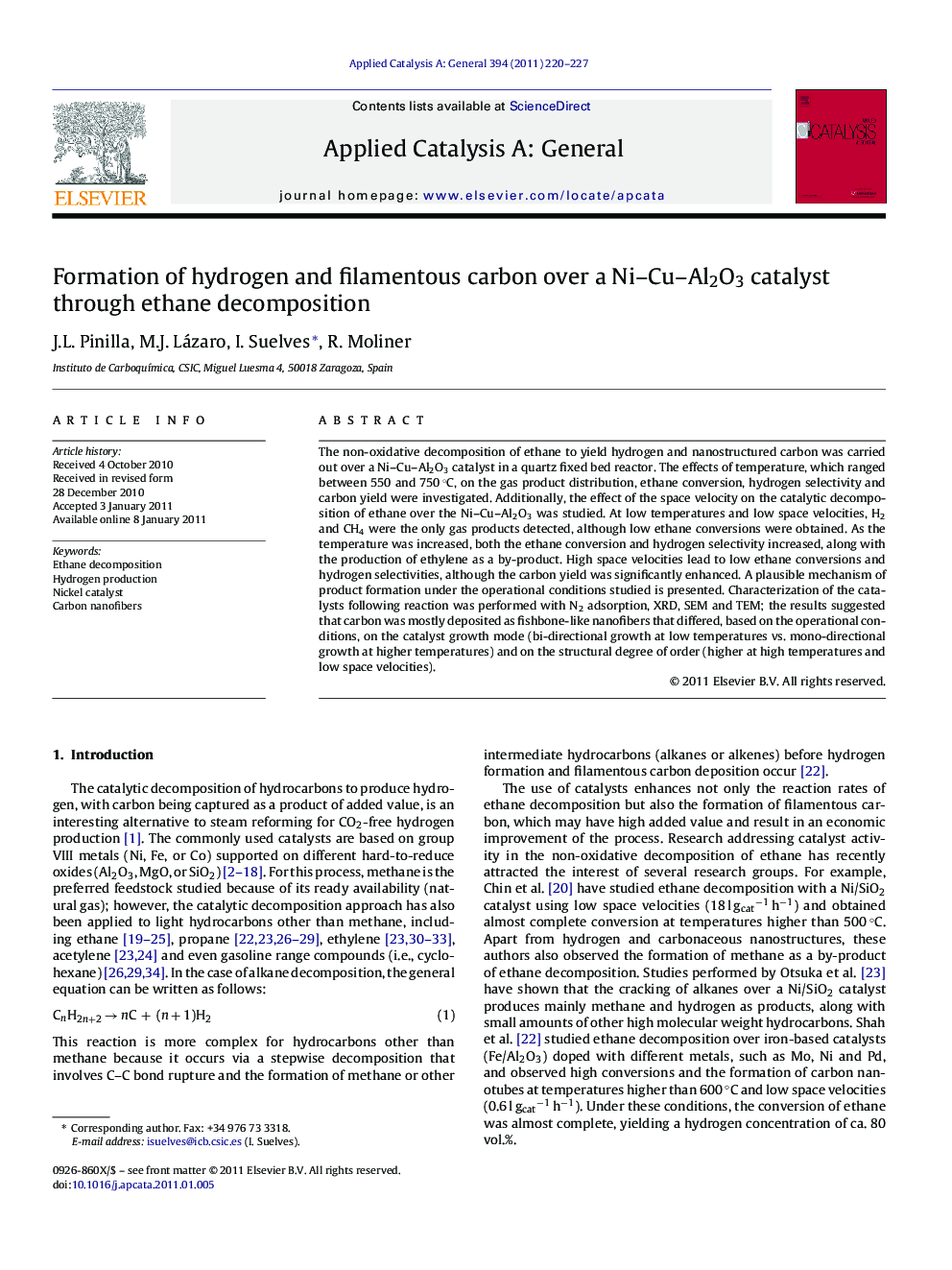| کد مقاله | کد نشریه | سال انتشار | مقاله انگلیسی | نسخه تمام متن |
|---|---|---|---|---|
| 41484 | 45890 | 2011 | 8 صفحه PDF | دانلود رایگان |

The non-oxidative decomposition of ethane to yield hydrogen and nanostructured carbon was carried out over a Ni–Cu–Al2O3 catalyst in a quartz fixed bed reactor. The effects of temperature, which ranged between 550 and 750 °C, on the gas product distribution, ethane conversion, hydrogen selectivity and carbon yield were investigated. Additionally, the effect of the space velocity on the catalytic decomposition of ethane over the Ni–Cu–Al2O3 was studied. At low temperatures and low space velocities, H2 and CH4 were the only gas products detected, although low ethane conversions were obtained. As the temperature was increased, both the ethane conversion and hydrogen selectivity increased, along with the production of ethylene as a by-product. High space velocities lead to low ethane conversions and hydrogen selectivities, although the carbon yield was significantly enhanced. A plausible mechanism of product formation under the operational conditions studied is presented. Characterization of the catalysts following reaction was performed with N2 adsorption, XRD, SEM and TEM; the results suggested that carbon was mostly deposited as fishbone-like nanofibers that differed, based on the operational conditions, on the catalyst growth mode (bi-directional growth at low temperatures vs. mono-directional growth at higher temperatures) and on the structural degree of order (higher at high temperatures and low space velocities).
Figure optionsDownload high-quality image (115 K)Download as PowerPoint slideResearch highlights▶ Non oxidative catalytic decomposition of ethane over a NiCu/Al2O3 catalyst. ▶ Influence of temperature and space velocity on catalyst performance. ▶ At T: 700 °C and WHSV: 24 l gcat−1 h−1, 95% ethane conversion and 45% H2 selectivity. ▶ Characterization of the produced carbon nanofibers.
Journal: Applied Catalysis A: General - Volume 394, Issues 1–2, 28 February 2011, Pages 220–227